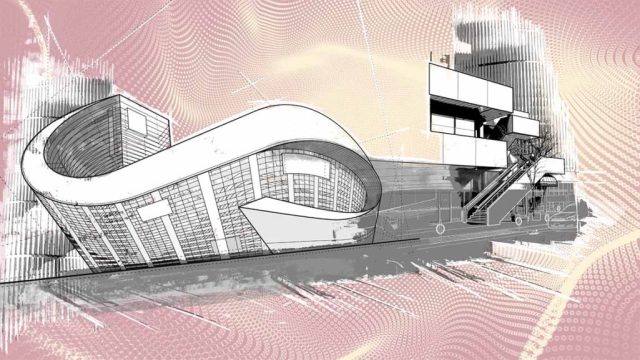- | 9:00 am
Are Design firms bending the rules of architecture to build virtual spaces in metacities?
The metaverse allows designers to push the envelope and explore creativity beyond the confines of the physical world.

The virtual space offers a fluid canvas for design to evolve. This has prompted UAE’s architects and interior designers to approach clients online during the pandemic.
But they weren’t sure if the images sketched on tablets had the intended impact on clients. Can they create their own world, where people experience being in spaces instead of simply viewing them? How can they bring these images to life in the digital world? A peek into virtual reality for business opened up infinite possibilities in the metaverse.
The new realm isn’t like VR gaming, where players just get a first-person POV of the digital world. Metaverse is a parallel universe where they can attend weddings or concerts and host exhibitions for their work.
Facebook rebranded to Meta last year and unveiled a digital ecosystem where people interact as 3D avatars. This set off a race among Google, Microsoft and Apple to build their own Metaverses.
Saudi Arabia’s project NEOM now seeks to build a city that combines the physical world with the metaverse. Dubai already has its metaverse lounge, where people can enter diverse worlds as avatars.
Businesses look forward to thriving in the metaverse, where customers can buy brands in a 3D digital marketplace. Developers can sell virtual real estate in the Middle East with platforms such as LuxuryProperty.com.
After crypto, there are metaverse coins to be used for transactions. Dubai has even unveiled a customer service center in the meta world for the health ministry.
Team building and coordination during remote working will become more realistic in the metaverse. Employees interacting as avatars in the digital realm can be an alternative for hybrid workplaces.
Hospitality, entertainment, and tourism are among sectors that stand to benefit from virtual tours and events in 3D spaces. But firms entering the metaverse create a demand for innovation to hold the customer’s attention. Customized digital ecosystems are as crucial as iconic logos and taglines for virtual branding.
This is where digital design and architecture firms build the metaverse, some of which are already active in the Middle East.
SETTING UP VIRTUAL SHOPS IN THE METAVERSE
Stretching creativity in the metaverse also unlocks the potential to create eye-catching digital storefronts and brand identities. Dubai-based design studio 4Space founded by Firas Alsahin promises a unique image for businesses to stand out in digital spaces. They blend gaming design tech with traditional architecture to increase their presence.
Game designers, developers, and architects will collaborate on a 3D design platform called Gravity Sketch. Teams will interact in a new way using VR headsets to exchange inputs and explore each other’s work.
BUILDING RELATABLE ECOSYSTEMS IN THE DIGITAL SPACE
Entering a 3D world and interacting with other avatars will take some time for consumers to adopt. Realistic replicas of auditoriums, galleries, or shops are one way to make them feel at home in virtual spaces.
UAE’s interior design firm Roar has stepped into the metaverse to develop customized properties for businesses. Roar Meta Space hopes to create showrooms, creative event spaces, and experimental hotels in the digital realm.
The firm’s founder Pallavi Dean sees designing in the metaverse as an extension of an architect’s practice. She also says creating with AR and VR tech isn’t new for them. Roar has bought plots in the Decentraland metaverse, close to its virtual fashion district. It paid the equivalent of AED 1,32,000 in Mana, the cryptocurrency used in Decentraland’s virtual world.
LAYING THE FOUNDATION FOR METACITIES
Cafes, shops, and apartments can be replicated in the metaverse, but why stop at that? Saudi Arabia is exploring this possibility with plans to build an entire city that will be NEOM’s digital 3D twin. The $500 billion projects will be a step towards building a virtual country within the country.
Visitors will simultaneously enjoy their presence in the physical world and the metacity as holograms. Potential residents can change colors and interiors in the metaverse for building apartments in the real world.
Dubai has also created 3D replicas of 220,000 blocks of its real estate, up for sale in the virtual world. Metaverse Dubai is the first platform with locations based in the real world.
STRETCHING BOUNDARIES OF CITY PLANNING
The metaverse sets imagination free because rules of conventional architecture don’t apply there.
Dubai-based Mohammad Al Assam’s Dewan Architects pushes boundaries with a helix-shaped structure housing an entire city. The metacity looks like a spiral staircase and has its parliament for autonomous discourse. Visitors can use NFTs to enter virtual museums and public spaces within this utopian digital city.
Gamers, hardware developers, coders, and VFX developers were brought together to create this massive NFT in the metaverse.
Even in its infancy, the metaverse allows architects to create innovative cities within cities. Imagine what skilled designers can do with a digital canvas spanning multiple worlds. Infinite parallel universes and interaction via 3D avatars will boost cooperation in the real world. Digital artists will be able to push the envelope to create immersive experiences.








































